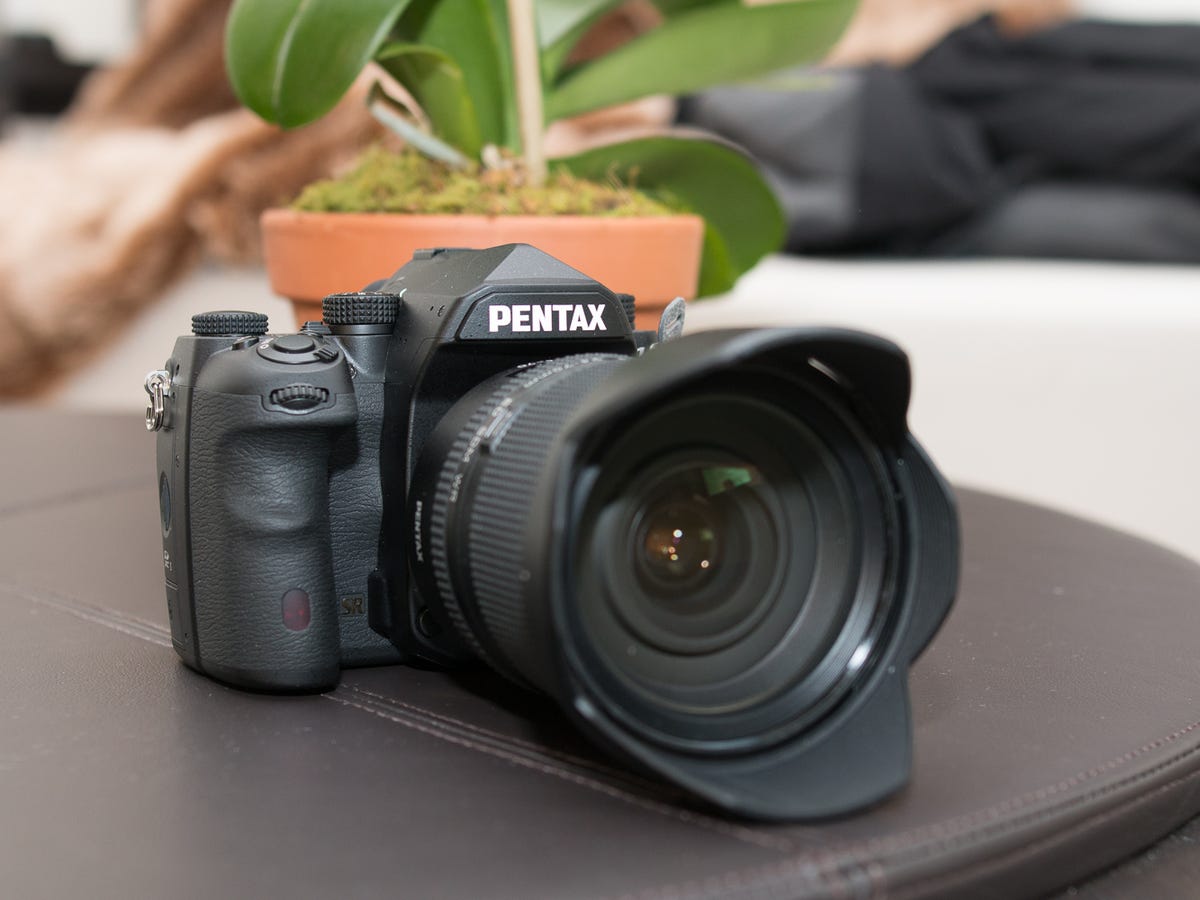
The K-1 is one of the smallest and lightest of its competing full-frame dSLRs, but not by a lot. Equipped with the heavy pro lenses, I don't think the size or weight difference makes much of a difference. It's also dust-and-weather sealed.
Quick access
A dedicated dial provides access to frequently used settings, which you control via that black dial. It's really nice when you need an option to be persistent; for instance, while shooting I left it on ISO and was able to quickly switch settings without having to hit another button on the back of the camera. Obviously, there are other ways to get to them as you can see from the dedicated ISO and exposure-compensation buttons. At least in the preproduction model, the dot functioned as a lock when shooting via the optical viewfinder. The switch on that dial toggles between still and video modes -- when in video mode you start and stop recording via the shutter button.
Custom settings
The K-1 has five user-settings slots on the mode dial rather than the typical three, and you can assign them custom names in the camera. It also has Pentax's unique Sensitivity-priority mode (Sv, which automatically adjusts shutter and aperture settings based on ISO sensitivity setting) and Shutter-and-aperture priority mode (TAv, which which automatically adjusts ISO sensitivity based on user shutter and aperture settings). To lock the dial you use the switch, not the button -- that's just an indicator as to whether it's locked or not.
Grip
The K-1 has a substantial, comfortable grip that's appropriate for shooting with heavy lenses.
Back controls
The K-1 has a similar control layout to that of the K-3 II, with the exception of the movie, live view and autofocus-area controls. For those unfamiliar with Pentax conventions, the right navigation button controls color and color effects.
Innovations
The LCD has four metal "legs" that attach to a hinged metal plate. The legs let it angle slightly in any direction, while the hinge allows you to tilt the LCD up or down. It's a really useful design. And as an added bonus, when you press the illumination button on the top, four LEDs in the back of the LCD light up so that you can see the right-side controls in dim light. There's also an LED above the lens mount so that you can see what you're doing when swapping lenses in the dark.
The other side
Here's the other side of the LCD mechanism.
Side controls
As has become popular, the focus controls sit on the left side of the camera. There's also a programmable button that defaults to a file-format override. Pentax's options for overriding the current format settings are very nice -- you can make them persistent or stop after one shot, and there's an option for overriding when it's in any configuration.
Connectors
The camera supports clean HDMI out. The microphone and headphone jacks are conveniently placed by the top.
Dual card slots
The camera has two SD card slots.
Battery grip
Pentax is offering a battery grip for the K-1.
Extra storage
The battery grip adds a second battery, and oddly, offers a place to stash an extra SD card. The battery in the grip supplements rather than replaces the in-camera battery, and the camera will deplete this external battery before switching to the internal one. The grip can also take four AA batteries in an emergency.
Grip
The battery grip uses external contacts to connect to the camera instead of a battery-replacement extension that fits into the compartment.


